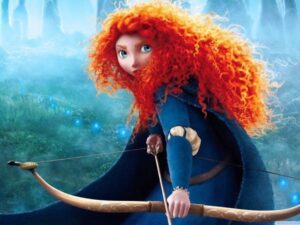 With anything concerning Pixar, expectations can be a problem. Every new film from the computer-animated powerhouse is immediately compared to their grandest achievements, like “The Incredibles,” “WALL-E” and the “Toy Story” series.
With anything concerning Pixar, expectations can be a problem. Every new film from the computer-animated powerhouse is immediately compared to their grandest achievements, like “The Incredibles,” “WALL-E” and the “Toy Story” series.
It’s an unfair comparison, especially considering many of the studio’s major talents have been focusing on non-Pixar projects lately (think Brad Bird with the latest “Mission: Impossible” or Andrew Stanton with “John Carter”).
Their latest effort, the Scottish fairy-tale adventure “Brave,” has drawn criticism from some as being “too conventional” or “too Disney,” an especially baffling criticism considering Disney now owns Pixar outright.
But understanding what the filmmakers are trying to accomplish with “Brave” is the key to enjoying the experience. This is a character-focused, decidedly-Pixar spin on the fairy tale genre, and what a beautifully executed spin it is.
Pixar’s first female protagonist is Merida (voiced by “Boardwalk Empire” star Kelly Macdonald), an adventurous and decidedly unconventional Disney princess with her wild red hair and impatience for all things prim and proper. Her mother (voice of Emma Thompson) wants her to be more ladylike, especially with the pending arrival of potential suitors for her hand in marriage.
Merida has no interest in marriage. She’s more like her war hero father (the great Billy Connolly), and would rather be shooting arrows at beasts while riding horseback through the forest than finding the perfect dress for the ball.
Obligated by tradition, Merida seeks to change her fate. This leads to an encounter with a batty witch in the forest and a spell that has far-reaching consequences.
Credit Disney for withholding the big twist from the film’s promotional materials. It’s not a particularly original concept, but Merida’s spell leads “Brave” into some insightful territory about mother-daughter relationships, as well as what it takes to build social progress while still honoring tradition.
“Brave” follows many of the conventions of a traditional fairy tale, a purposeful story decision that is used to emphasize the character development. Without the outline of how a princess is “supposed” to behave, Merida’s journey to independence would not be as impactful.
As with all Pixar movies, the animation in “Brave” is spectacular. Nobody builds lush landscapes or packages action set pieces like Pixar, and the Scottish landscape on display is a marvel to behold.
If “Brave” is short on anything, it’s humor. Merida’s three younger brothers provide some slapstick fun, but there isn’t much else besides some tired Scottish tropes about kilts and bare bottoms. Even the hysterical Craig Ferguson has only a few funny one-liners.
The lack of light-heartedness might be a reason why some rank “Brave” below other Pixar entries. But what’s the point of ranking? Pixar continues to release movies that place emphasis on character, and that’s all that should matter.
And calling “Brave” a traditional Disney Princess movie shouldn’t be considered a criticism. It stands proudly alongside the likes of “Cinderella” and “Sleeping Beauty,” and, even better, Merida doesn’t need a prince to save her from anything.
Grade: A-
